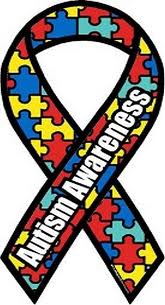This is a guest post, brought to you by the National Autism Resources
Creating a Calm Down Room for Children with Autism or Sensory Disorders.
As all parents know, dealing with a crying or agitated child is never fun. While each child and parent will have their own ways of resolving these situations, one thing that parents of Autistic kids do is create calm down rooms. When your child is over-excited, bringing them to a familiar, soothing location designed for their specific needs, may help them to relax, and can begin to bring them into a more serene state. However, certain sensory distractions may agitate them even more, so it is important to pay attention to what your child reacts to and doesn’t. Here are some types of sensory disorder calming rooms you can create and things that can help make them a calm place for your kids.
1. Calming Scents Room
One thing that can work extremely well in a calm down room are scents like vanilla or lavender. Numerous therapists and Autism experts recommend these and there are a ton of ways to help your child calm down. You can find scented stuffed animals, sheets and even scent kits like the Scents Sort Match-Up Kit which has 30 different scents in self sealing cups. Try to find a scent that can help your child to relax and then you can combine it with other stimulators to help them calm down and relax. Taking extra steps to help prevent meltdowns can mean the difference between a relaxing day  and a nightmare of a week.
and a nightmare of a week.
2. A Touch Disorder Room
Tactile disorders can be the trickiest to deal with. The smallest things like a tag on pajamas or even a lump in a mattress can be a nightmare and prevent your child from a full night’s sleep and make their calming room as uncomfortable as sleeping on a bed of rocks. 3 things you should be cautious of when creating this room are any tags on sheets, mattresses or pajamas. Anything below the sleeping or sitting area or on the seat that could cause an unbalanced feeling or lump and any raised surfaces that won’t allow for a comfortable smooth or warm hug feeling. You can also use products that tend to work on many kids including crash mats combined with weighted blankets, weighted vests with a scented toy or even weighted lap pads and weighted shoulder wraps. These products help your child to feel warm and protected like they are getting a comforting bear hug.
3. Soothing Sounds Room
While everyone gets irritated over certain noises, those with Autism and sensory disorders may be particularly bothered by noises that many others might consider routine in their day. Something as simple as a dog barking outside or traffic noises can affect your kid like nails scratching down a chalk board would affect you. As a result, it may be important to ensure that only desired noises can make their way into the calming room.
Some children may require complete silence before they can relax which is where a white noise generator or noise cancelling headphones will be great. Other children do not require silence and even benefit from noises. These children may be soothed by meditation cds and sound machines. These combined with scents, weighted blankets for tactile disorders or even just with a soothing lamp can help your child calm down before a meltdown.
4. A Visually Calming Themed Room
While dimmed lighting or darkness can help many children relax, for children with visual sensory disorders even a nightlight can be enough to distract them and prevent them from calming down or relaxing. Small night lites can also become projectiles if your child is having a tantrum. If you are creating a room for children who are sensitive to visual stimulation, it is important to remove all bright colors and replace them with warm, deep and relaxing colors that can soothe them. You’ll also want to invest in a projection machine that can project calming patterns, shapes or even fluid liquids and motions.
One product that many have found success with is the Twilight Turtle. The Twilight Turtle projects constellations onto the ceiling while playing soothing noises and can even be combined with soothing scents. This all in one sensory toy is ideal for many kids that suffer from sensory disorders. If this does not help your child, there are a variety of products that may be more effective at calming them down. For example, there are volcano lamps, cherry blossom trees, and even a flowing, led jellyfish lamp that can relax your child and help them sleep.
5. Helping One Sense Isn’t Always Enough
Every child is unique, and as a result, their calm down rooms may have to be as well. It may help to have a variety of sensory tools to choose from in the calm down room. Figure out what helps your child to relax and try to rotate the products and things in your calming room so that it is familiar for them, but not something they have become used to and can lose its effectiveness.
When a child is extremely agitated, most parents’ priorities are to help them relax. In many cases, a calm down room may be the best way to do this. Bringing your child to a well-known and comfortable location that is fitted with the tools they need to relax may be the best way to soothe them. It’s always good to think about what works and doesn’t and keep a chart of these things. Then when creating the room or rotating products, you can have a better idea of what combinations work best. Tantrums can be exhausting for both parents and kids which is why a calm down room is an ideal solution if you have the space in your home.

![Read more about the article Custom Built Weighted Blanket by DreamCatcher [Giveaway]](https://www.theautismdad.com/wp-content/uploads/2011/08/2011-08-23_20-50-08_692-300x169.jpg)
